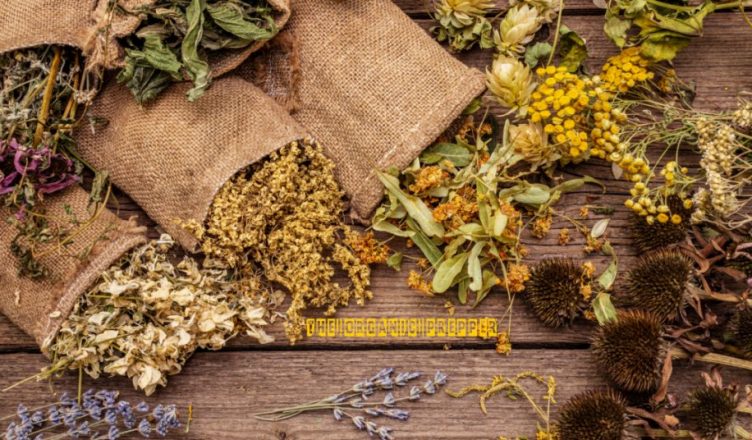Are there medicines in your backyard? Absolutely, but to determine what they are, you first must understand the practice of herbalism.
Herbalism is the forerunner to modern pharmaceutical medicine. One of the main principles of it that should be taken to heart was expostulated by Nicholas Culpepper the author of the Materia Medica during the Middle Ages. This book was the first comprehensive guide in Europe to herbal healing. Considered the “father” of modern herbalism, Culpepper wrote the following tenet, a foundational concept to his field:
“The herb, taken whole with all of its parts, is more effective than any part on its own or combined with other parts.”
Here’s what that means.
As an example, lycopene is an extract that is taken from tomato plants. It has beneficial effects on the heart. While modern scientists have deduced the healing powers of lycopene by itself, they’ve forgotten that in its natural state, it is merely one component part of the tomato. Within a tomato, other chemicals and minerals balance the lycopene, potentiating and making this heart-healthy compound more effective when consumed within a whole tomato rather than in an isolate.
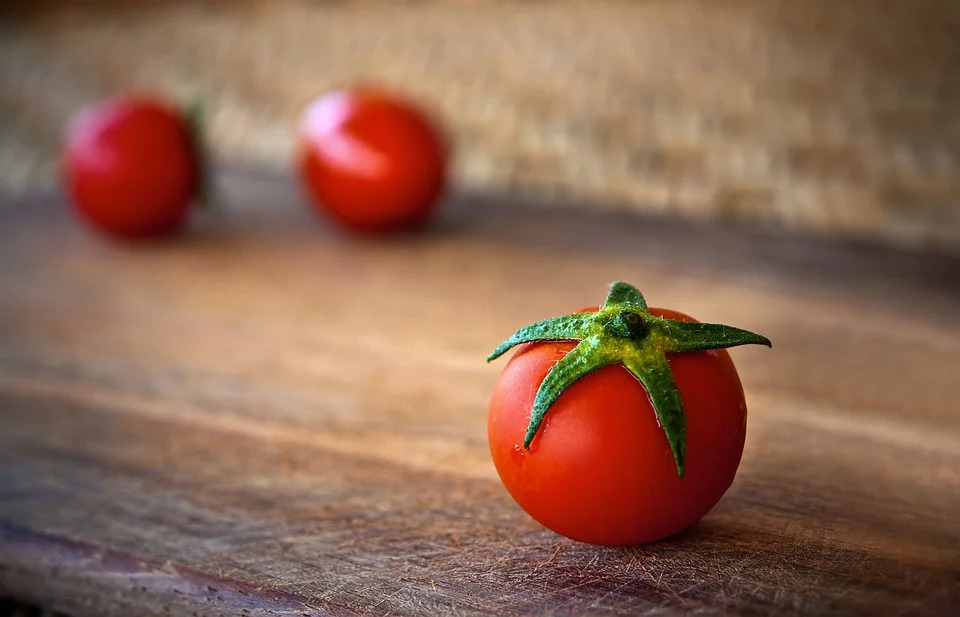
That’s not to discount science, however: there are some people who can utilize lycopene but are allergic to tomatoes. In such cases, the extracts have their benefits. Pharmacology is the “younger sibling” of herbalism, and the two should always complement each other.
When delving into herbalism, I recommend following the motto of the U.S. Army Special Forces medics, for helping others and for taking care of yourself:
Primum non nocere: “First, I shall do no harm.”
With herbs and wildcrafting (the gathering of herbs from the woods and fields), it’s always better to err on the side of caution. I highly recommend a course of some kind in plant identification or about the basics of herbalism taught by a certified master herbalist. I also recommend a good Peterson’s Field Guide to identify the flora of the geographic locale of where you reside. Especially regarding mushrooms!
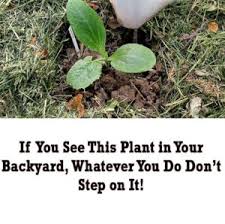
Although ink prints and pictures are informative, nothing can substitute for a good guide that has clear color photographs, except an instructor who points out each plant to you by hand, in person. Again, especially regarding mushrooms, color photos only! Those guys can really put the “whammy” on you if you make even a tiny mistake.
Another reason for a colored guide is that some plants are either poisonous or toxic to the touch. An example is Lupine which holds plenty of alkaloids that can be absorbed through the skin. We’re just going to skim the surface and give you some basic ideas. Bottom line: don’t pick or eat anything until you know exactly what it is.
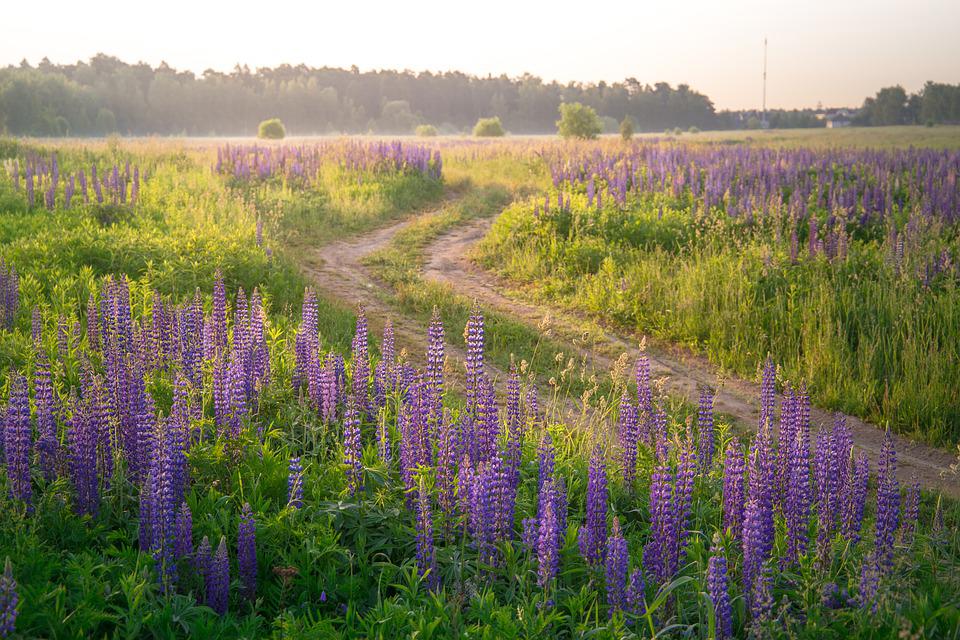
The basics of finding those medicines in your backyard
The flora I’m going to suggest for you are common forms, and most of them grow not only throughout the U.S. and North America but also live in fairly arid areas.
From a survival perspective: you want to know what’s on your property, but you don’t necessarily want to harvest what’s on it. You want to forage in the woods or out in the open fields. The reason? Don’t use up the supplies on your own property, especially as they’ll reproduce. You also want to learn to save some seeds from these plants, just in case you ever have severe flooding or fires that might ruin a crop for a season.
When you’re wildcrafting, don’t grab all of the plants in an area. Leave the biggest and hardiest of the plants on their own to live. Take enough for your needs of making herbal medicine for yourself. Don’t over harvest or waste any of it.
I also advise gathering your herbs and plants for the day in paper bags. Sometimes the plastic bags can leach chemicals into the herb or cause reactions to occur while you’re carrying your herbs around, unsuspectingly.
As well, get yourself a pair of good work gloves, either cloth or leather, to protect your hands. Be aware of fauna in the areas you intend to pick your plants. Bees and hornets do make nests underground, and it would behoove you to “look before you pluck!” There’s always poison oak, ivy, and sumac to contend with, as well as briars that can damage unprotected limbs.
(Do you know what the four levels of disaster are? Check out our free QUICKSTART Guide to find out.)
Let’s lay out some that I have on my property that are almost certain to be on yours as well.
Yarrow (Achille millefolium)
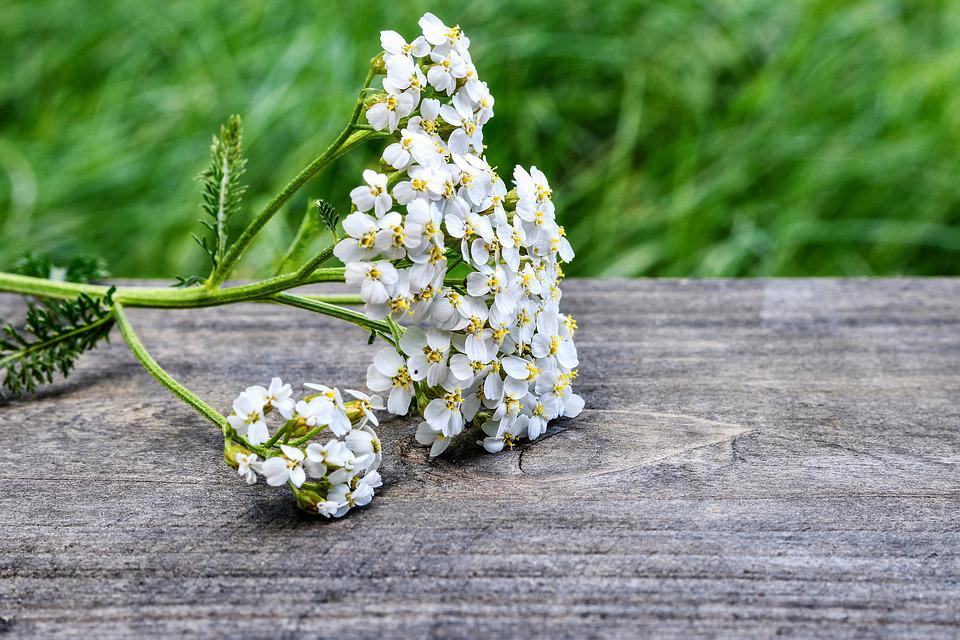
While it can be used as an anti-inflammatory, its best attribute is its use in wound healing. Just a nice-to-know fact: it draws its scientific name from Achilles, the famous warrior of ancient Greece, who used to give first-aid to his fellow warriors with the plant.
Yarrow is also used for neurological conditions, such as Parkinson’s disease and multiple sclerosis. It has anti-spasmodic effects that can help those with irritable bowel syndrome. It can be taken internally as tea, and to heal wounds, the leaves can be placed directly on the injury. Peripheral vasoconstriction occurs at the site. If your yarrow has been dried, moisten the leaves first.
Self-Heal (Prunella vulgaris)
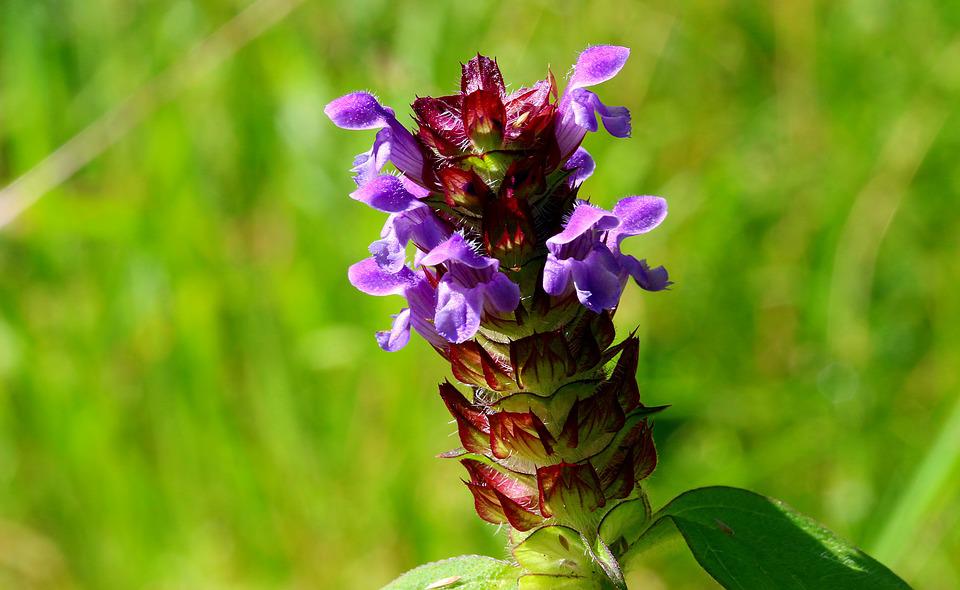
This is a strange little flowering plant with purple petals and a sort of “barrel-shaped” center that grows really close to the ground. This can help in a poultice (always moisten first!) for deep tissue wounds, just as its name suggests.
It can be found in shady places out of direct sunlight, in cooler areas, especially along forest edges. It has long been used on lacerations and inflamed mucosa of the mouth or when a person has enlarged glands in the throat, such as goiter. It also helps with anxiety.
This can also be taken as a tea or as a tincture of 1-5 drops. The tea can be taken internally or used externally on a wound, and the plant has long been used in TCM (Traditional Chinese Medicine).
Women who suffer from breast maladies, such as swollen breasts or sore nipples, cysts, or mastitis, can make a massage oil for these conditions out of almond oil infused with either fresh or dried self-heal flowers. Keep it for 14 to 21 days at 100 degrees Fahrenheit, and ladies can alleviate those pains with this homemade infused-oil remedy. The oil can also help those who’ve suffered painful bruises or impacts on their muscles at work or in sports.
Butter and Eggs (Linaria vulgaris)
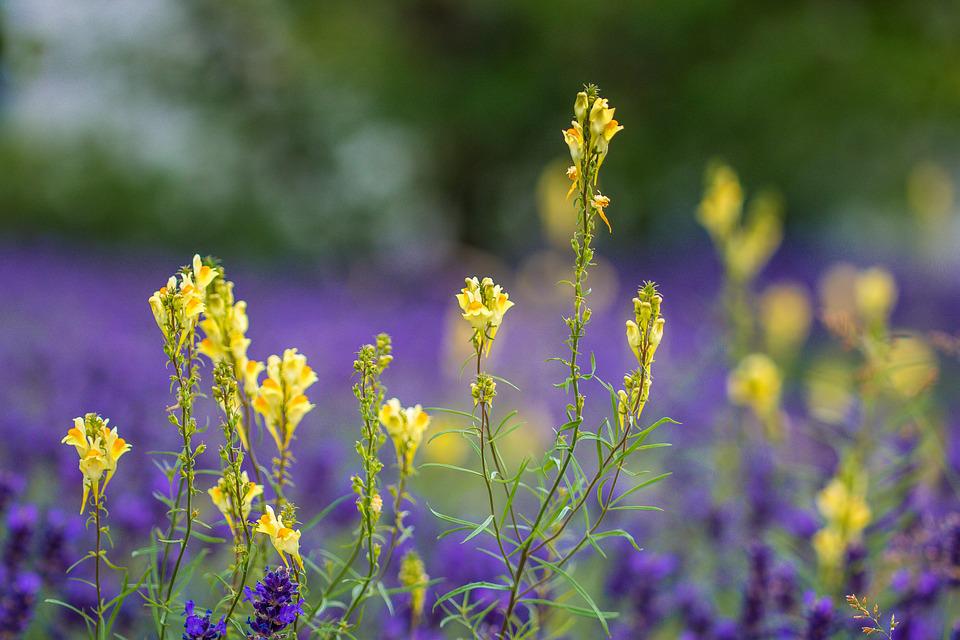
Another name for this easily-spotted plant is yellow toadflax. Introduced into the U.S. from Europe, it spread throughout the country and all over Canada, too. It’s between 1 to 2 feet tall with a light-yellow flower with a dark-yellow center…resembling a sunny-side-up egg. Bees, larger insects, and hummingbirds use their pollen and nectar. It has a slight toxicity to mammals because of glycoside content, so it’s not to be taken internally in large quantities.
The limit is two teaspoons per day of dried plant and taken as a tea.
It also has tannic acid and choline, as well as Vitamin C. It’s used for constipation and, conversely, to “solidify” diarrhea. It’s also good for hemorrhoids, as a diuretic (makes you urinate), and as a tonic for the liver. Brewed as a tea and cooled, it can be soaked onto a cloth or compress and then applied to an eye for an eyewash.
For hemorrhoids: chop up the plant, and make a one part plant to about ten parts of olive oil, coconut oil for a salve. Again, heat this mixture to 100 degrees F for about two weeks to completely infuse the flower into the oil.
Mullein (Verbascum thapsus)
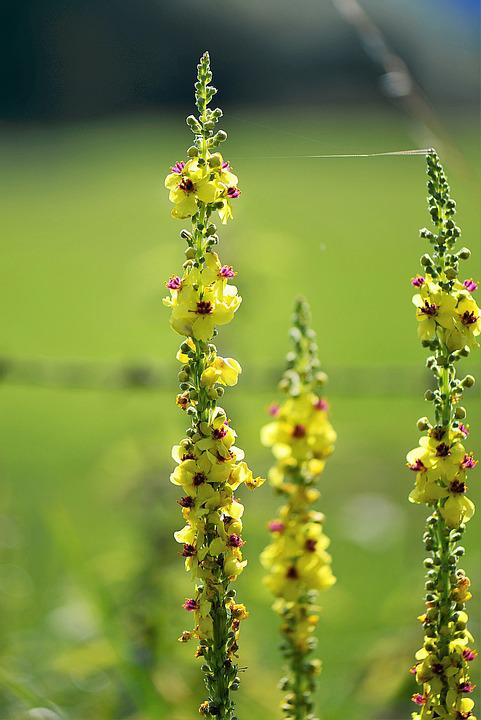
This guy is one of my favorite plants. They really thrive in almost “barren” soil and can survive in some extremely dry, desert-like conditions. It grows to be six feet tall or higher, and it has very broad, key-lime green leaves at the base. They’re “hairy,” and they can reach about a foot in length while their vertical stem grows up thick and straight. From this stem, it sprouts a lot of yellow flowers about the size of a dime.
It was imported in the early 1700s to the United States specifically to cultivate it for its medicinal qualities. It loves sandy soils that are dry and have gravel.
Oil extracted from the flowers is used for earaches, eczema (a type of rash on the skin), and other external aids. Teas from the flowers and from the leaves are used for coughs and lung ailments. With the tea for a cough, or sore throat, take a dozen of the flowers and steep them as a tea for about 15 minutes, and then drink it. The flowers are optimal, but the leaves can be used, as well, and for respiratory infections, the leaves can be smoked/inhaled.
Important Note! We’ve been mentioning the teas for these herbs. When you begin the process of making tea, after boiling the water, take it off the heat and let it sit for 1-2 minutes. You don’t want to put your herbs into boiling water. It “boils” the cells and decreases the herb’s effectiveness. Let the temperature go down below a boil, and then add your herb.
Goldenrod
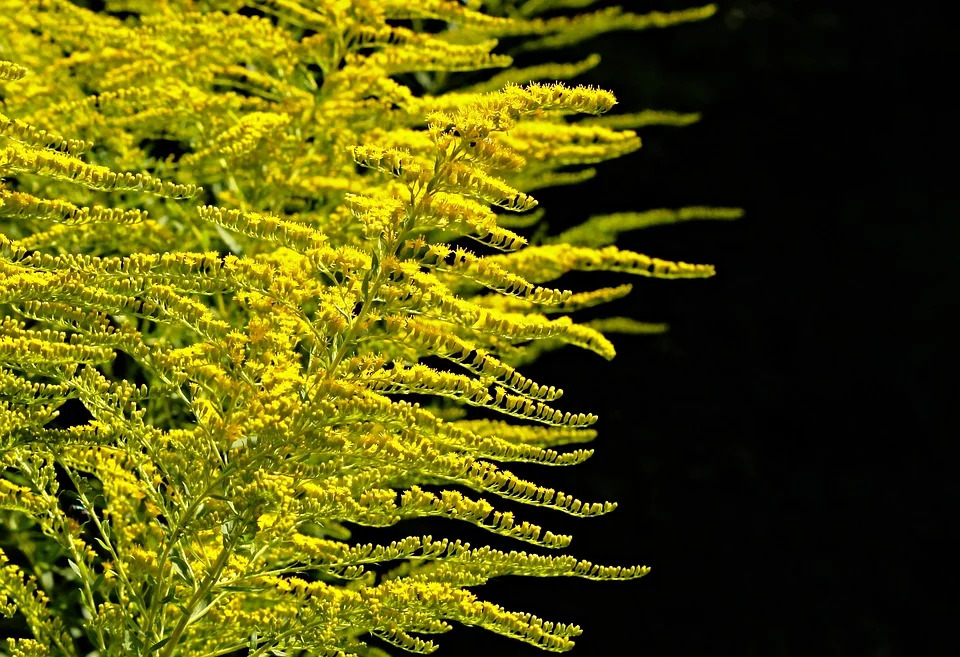
Canada (Solidago canadensis)and Common (Solidago spp.)are excellent for use in remedies for the respiratory, digestive, and urinary systems. It’s very fragrant, with a lot of resin in the leaves, smelling something like balsam wood.
All species of goldenrod can be used as medicine, and they are easily identified.
Note of caution! Always differentiate from Ragwort, Staggerweed…all in the Senecio genus, and they’re deadly toxic, damaging livers of livestock and people with pyrrolizidine alkaloids…taking months to show sometimes in signs and symptoms!
Goldenrods flower in the late summer/early autumn. They’re “magnets” for bees and insects of all types. Use the leaves and the flowers to make medicines. Dry them out, and you can make a tea (infusion) of 1 to 2 teaspoons of dried leaves and flowers per cup of water, up to 3 times per day.
It’s a diuretic, anti-inflammatory, and antimicrobial. It also promotes diaphoresis (sweating), and externally, that tea can be used as an astringent to clean up skin and wounds. Internally, it fights problems in the urinary tract, lungs, and gastrointestinal system. It can also be used to bring relief to edema (swelling), kidney stones, and gout.
Once again, the tea can be used in a wash or as a poultice to treat wounds, sores, lacerations, and burns, and its antimicrobial actions will help speed up healing.
Milk thistle (Silybum marianum)
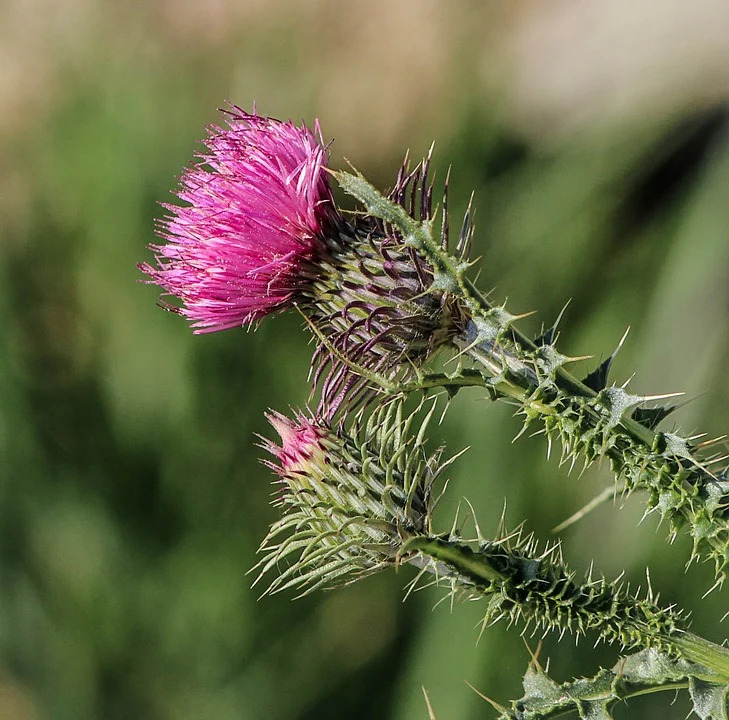
This plant has a chemical in it called Silymarin, a powerful antioxidant that is extracted from the seeds of the plant. Traditional uses center around liver and gallbladder treatments and also to aid with cirrhosis, hepatitis, and jaundice.
Okay, I know this sounds exciting. Here’s the “kicker” with this stuff. The power is in the seeds, and milk thistle has been proven in studies to actually lengthen telomeres. In case you aren’t familiar with them, telomeres are “caps” on the end of our chromosomes, and the amount of times they are able to split constitutes the course of a person’s aging and life.
For more on this, I highly recommend watching the YouTube videos of Dr. Elizabeth Blackburn. Her three-part series on telomeres (which she won the Nobel Prize for when she discovered them) is fantastic.
Milk thistle seeds can be tinctured. The best tincture is in pure grain alcohol, 98% alcohol, such as Everclear. There are two advantages to this. First, maximum extraction of the components. Secondly, the tincture will never freeze because of the obscenely-low freezing point of pure alcohol.
Hawthorn (Crataegus spp.)
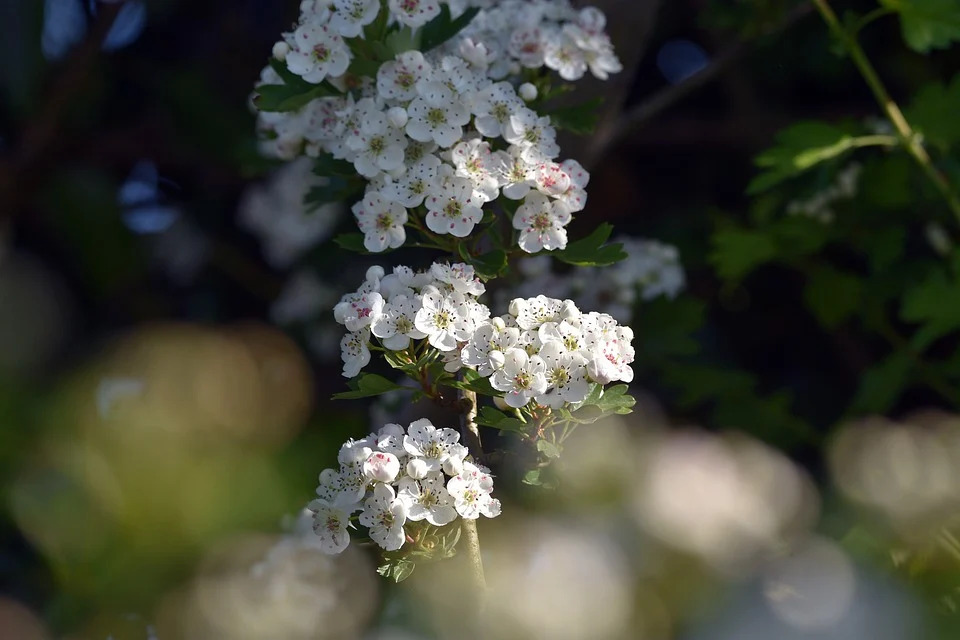
Hawthorn is a tree, and it takes about three years for it to produce its berries. Those berries are worth their weight in gold. They are cardiotonic, with proven powers to strengthen hearts and help them recover from diseases or the ravages of aging. All parts of the plant are used medicinally: the leaves, flowers, berries, and bark. It first became widespread in use in the Roman Empire around the time of the birth of Christ.
The medicine can help with high blood pressure, atherosclerosis (plaque buildup in the arteries), and angina (pain in the chest that happens when the heart isn’t receiving adequate oxygen). It causes smooth-muscle dilation in the coronary arteries, allowing more blood flow into the heart. It also strengthens the contraction of the heart muscles, as well as improves the heart rate, and aids in the transmission of the nerves and nervous system. The berries can be steeped in a tea or eaten as a fruit. All of the parts mentioned earlier can be tinctured.

Pine needle tea
You make this easily, just by steeping pine tree needles in hot water. The tea stays transparent or picks up a slightly-greenish tint. Eastern White Pine is highly sought after for this tea and mass-produced.
CAUTION! You must be 100% certain of the type of tree and its needles!
Toxic conifers (pines) include the following: Lodgepole (Shore) pine, common juniper, Ponderosa pine, Monterey cypress, Common Yew, Australian pine, and Norfolk Island pine are all examples of pine species that are toxic to humans.
Once you’ve “cleared” your pine and know for certain it is not in the list of toxic types, making tea is simple. Take about 1/2 cup of pine needles, and use a water ratio to your preference (1 to 3 cups of water). I like it strong, so I use about a cup and a half.
Boil the water, take it off for about three minutes, and then let it steep for 5 to 15 minutes…the longer, the better. When it cools, don’t heat it up again. Drink it cold, like iced tea. The longer you steep, the stronger the tea. You can put stuff in it, like honey, sugar, or lemon, but try it “straight up” first…you might find you like it that way, as I do.
Pine needle tea is an excellent source of vitamin C. Two robust, strong cups will more than exceed the puny, ineffective “60 mg” dosage that is the RDA (Recommended Daily Allowance) for Vitamin C. On a personal note, you may wish to read the writings of Dr. Linus Pauling, another Nobel Prize winner, for his work on Vitamin C. It’s a water-soluble vitamin: whatever your body doesn’t need, it will excrete in the urine.
When the substance hits the fan, you’ll need to provide Vitamin C for yourself and your family to prevent scurvy and other degenerative illnesses. Pine trees can be found all over the place.
Dandelion (Taraxacum officinale)
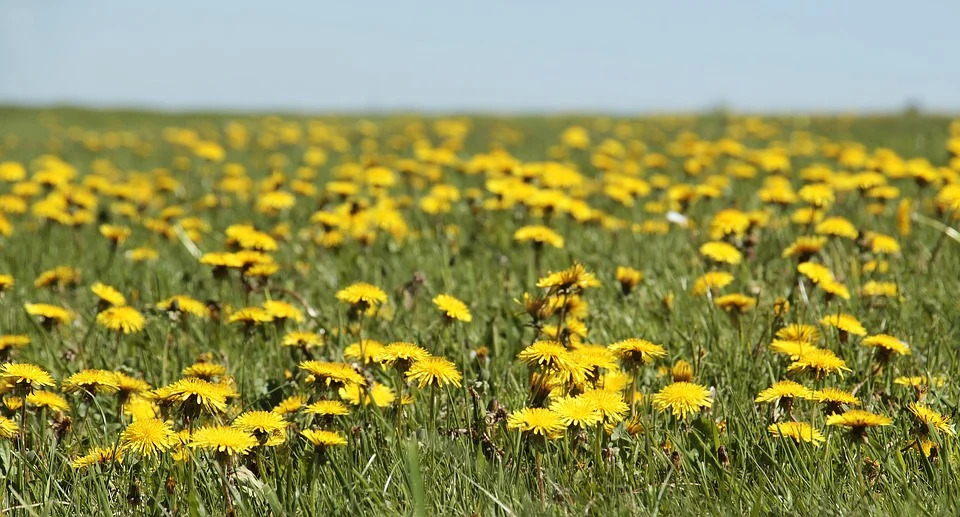
Dandelion can be eaten in its entirety: the flower, stem, and leaves, as well as the root. It is so crammed full of vitamins and minerals as to defy belief. Extremely high in Vitamins A and C, it can be eaten raw in a salad, or the leaves can be steamed and then eaten like spinach.
Dandelion root is an excellent diuretic, keeping you from taking on water and bloat. The best time to harvest these roots is in October/November. By that time, the flower will pretty much have died off. You can do what I do: make yourself some little flags to place on the ground beside the dandelions. Then when the flower is gone, you can just dig right where the flags are and find your roots.
Nice to know, but a little advanced for this presentation. There’s a plant called Lomatium (Lomatium dissectum), very common in the Western States, also called prairie biscuitroot. It is one of the most powerful natural antivirals in the herbal world. As a matter of fact, the Indian Tribes made it through the 1918 Spanish Flu pandemic…one that killed 50 million people worldwide…and this plant was part of the reason. Dandelion tincture offsets its effects, as 25% of people who use Lomatium develop a (nonpermanent) rash on their chests. An equal amount of Dandelion root tincture taken concurrently will offset it.
(Want uninterrupted access to The Organic Prepper? Check out our paid-subscription newsletter.)
There are a host of medicines in your backyard. This is just a taste.
We’ve covered an introduction to some of the most common, readily-found herbs that you and your family can use. For more on food, I recommend the book Eat the Weeds by Ben Charles Harris, written back in 1971. I suggest this work because it takes all of the herbs and weeds that are edible and gives specific nutritional charts for all of them. That alone is worth its weight in gold.
This small primer will hopefully start you in the right direction. If you’re looking for an even more in-depth look at the topic, may I recommend The Organic Prepper’s Herbal Skills Intensive.
Success with self-sufficiency can be obtained by learning about the environment that you’re a part of – the bigger biome. Times are coming, mark my words, when we will have to rely upon ourselves and our knowledge and skills. Wwhen the trucks stop rolling, the dollar is worth nothing, and all of the stores have been emptied, you are going to wish you knew more about herbalism.
Prioritize and allocate some time for studies in this area of foraging. Let these plants we’ve covered here be the beginning of a preparation that can help you in those times to come. Guess what? It can also be a type of exploratory adventure you can share with your family and others. Take care of one another, and pray without ceasing. JJ out!
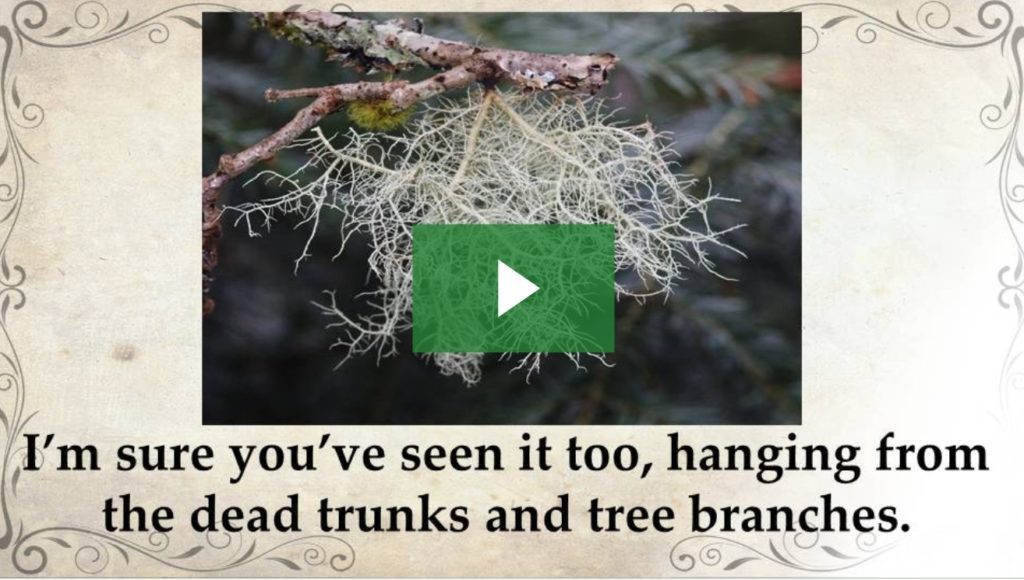
source : Jeremiah Johnson

